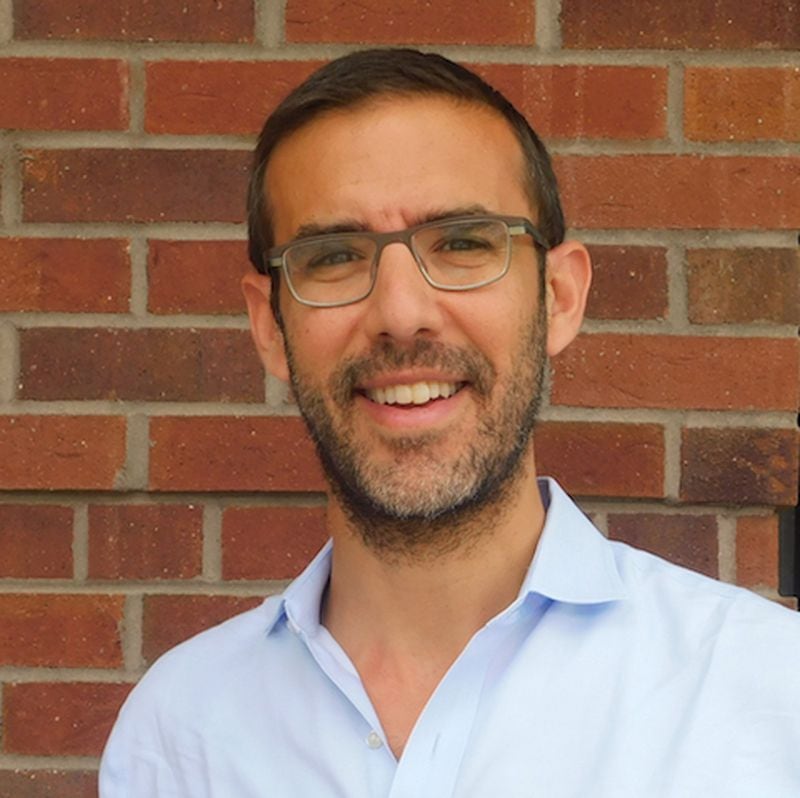Joshua S. Weitz is a professor of biological sciences at the Georgia Institute of Technology and founding director of the Quantitative Biosciences Ph.D. program at Georgia Tech.
In this guest column, Weitz says Georgia colleges are not ready to open under current infection levels. Once infections decline, Weitz says a key factor in reopening for hybrid or face-to-face learning at the state’s campuses will be testing and rapid isolation of infected students.
Weitz co-wrote a column for AJC Get Schooled in March that used a mathematical model to illustrate why banning large events helps reduce spread in the midst of the coronavirus epidemic. Follow him on Twitter @joshuasweitz.
By Joshua S. Weitz
The start of the fall semester looms. In Georgia, 330,000 students are expected to return in the next few weeks to 26 public colleges and universities throughout the state for what the Board of Regents has termed “face-to-face” instruction.
This return is unjustified. Georgia – like many other states – is experiencing a surge in COVID-19 cases, hospitalizations, and fatalities. This surge will be intensified by bringing back thousands, if not tens of thousands, of students to high-density campus life featuring dorms, dining halls, classrooms, and parties. Instead, the University System of Georgia should change course – now.
There are ways forward. If Georgia’s public colleges and universities want to enable hybrid and even face-to-face learning once community infection levels decline, then arrival and repeat testing must be one part of comprehensive, shovel-ready systems to identify cases, rapidly isolate those who are infected (irrespective of symptoms), enforce mask requirements, foster infection prevention across campus, and provide resources to those who face near- and long-term impacts of infection. That’s a long list, but shortcuts won’t work. Absent these safeguards, then there is only one viable way to start the fall term: online.
To understand why Georgia’s colleges and universities are not ready for face-to-face instruction, consider the return of 10,000 undergraduates to campus. How many of those will be infected with SARS-CoV-2? An estimate is possible by observing that in the past two weeks, more than 50,000 new cases have been documented in Georgia, more than 25% of the total cases reported by the Georgia Department of Public Health since the outbreak began. Given asymptomatic infections and ongoing deficiencies of testing, even those large numbers of cases are almost certainly a significant under-estimate of circulating cases.
An analysis of population-level antibodies by the Centers for Disease Control and Prevention and published by the Journal of the American Medical Association revealed there were typically 10 times as many actual infections for each case confirmed via PCR based tests. Even if one assumes that test capacity has increased so that there are now five actual cases for each documented case, that would imply at least 250,000 people have been infected in Georgia in the past two weeks. In other words, approximately one in 40 Georgians might be infected now.
These odds mean that amongst a group of 10,000 students, a few hundred may be infected (or a few dozen if the college is ‘lucky’). How will a college identify and isolate those cases? Without testing, it won’t. Instead, without systematic and large-scale entry testing, the initial number of imported cases will matter far less than subsequent community transmission.
For example, our COVID-19 event risk assessment tool estimates that there is an approximately 50-50 chance that one (or more) in a classroom of 25 students and one instructor would show up to class infected with SARS-CoV-2. This elevated risk will not be confined to students. Instead, vulnerable staff and faculty will become another group of ‘essential’ workers who are viewed expendably amidst failures by state and federal officials to safeguard our collective health.
Testing 10,000 students (as well as staff and faculty) will require the coordinated efforts of many, but such a program is possible if on-campus laboratories and expertise are leveraged to provide frequent and/or pooled testing at scale. It should not require petitions to expand testing for SARS-CoV-2, as in the case of efforts to seek a system-wide mask requirement. Instead, university leadership should be doing more to support faculty-led efforts to develop large-scale testing capacity, often in the face of bureaucratic hurdles.
A testing-as-mitigation strategy should emphasize speed, ideally testing each student when they arrive and then at least once per week thereafter (i.e., faster than the infectious period). Rapid testing can help to ‘remove’ infected cases from circulation, stopping new chains of transmission before they start. Such a strategy may cost multiple millions of dollars per term for a campus with 10,000 students. But the cost of inaction is even greater. For campuses without this kind of testing capacity, bringing students, staff, and faculty together in high-density learning and living environments amidst a surging epidemic is a recipe for large-scale quarantines, shutdowns, and an even-worse outbreak.
About the Author







